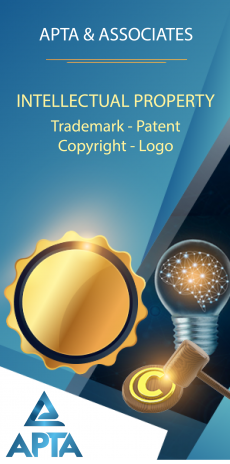– A patent for invention shall each have a validity starting from the grant date and expiring at the end of 20 years after the filing date.
– A patent for utility solution shall each have a validity starting from the grant date and expiring at the end of 20 years after the filing date.
Annuity needs to be paid in order to keep the patent valid. To have the validity of his/her invention protection title maintained, a protection title holder shall pay a validity maintenance fee within six months before the expiration of the validity term. The payment of the validity maintenance fee may be delayed for no more than six months after the expiration of the current validity term but patentee shall pay the maintenance fee plus 10% for each month of delayed payment.
A patent application shall be subject to formal examination. The time limit for formality examination is within 1 month from the filing date with national applications, and within 32 months from the earliest priority date or 1 moth form the date of the request to the national phase early with PCT application.
– In case the patent application is filed sufficiently, the Vietnam Trademark Office shall send to the applicant a notice on formality acceptance.
– For an application that fail to meet the formal requirements, The NOIP shall issue a notice of intended refusal, clearly stating the reasons and setting a time limit to correct and set a time limit of one month from the date of notification to give opinions.
The substantive examination is to assess the patentability and will be carried out by the examiners within 18 months from the date of the request or the date of publication (depends on which comes later).
The NOIP shall send the applicant one of the following notices:
– A notice of intended refusal, clearly stating the reasons and setting a time limit of 2 months for the applicant to give the opinions and fulfill the requirements.
– A notice of intended grant and request the applicant to pay the fees (including granting fee, publication and the fee for maintenance of the first year’s validity of the patent).
Within 10 days after applicants pay the fees, the NOIP shall carry out the process for granting the patent in Vietnam.
A patent for invention is granted if the technical solution meets the protection criteria of novel, inventiveness, and capability of industrial application. A patent of utility solution could be granted if a technical solution does not meet the required level of inventiveness but is not common knowledge.
In general, patent applications in Vietnam will be published in the 19th month from the earliest priority date or the filing date in case the application has no date of priority or within two (2) months after being accepted as a valid application, which ever is later for opposition and comments of third parties. Applicants shall pay a fee for such publication.
Patent applications under the Patent Cooperation Treaty (PCT) shall be published within two (2) months from the date it is accepted as a valid application and enters the national phase.
Detailed information including full specification can be accessible at the NOIP under request and subject to prescribed fee.
A patent owner shall be entitled to:
(i) Exclusive use of the patented invention or utility solution, including the right to license,
(ii) Request any person infringing his patent rights to cease from the infringement and ask for any damage suffered.
The patent owner has certain obligations including:
(i) To pay remuneration to the inventor(s),
(ii) Pay the annuity of the patent, and
(iii) Use or license the patented invention or utility solution to a third party in the form of compulsory license according to the decision of the competent State authority.
